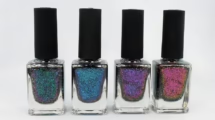Dream Big: How Sleep Enhances Creativity and Problem-Solving
Introduction
In our fast-paced world, the importance of sleep is frequently overshadowed by the pressures of productivity. However, emerging research reveals that sleep is not merely a passive state of rest; rather, it is a dynamic process that plays a critical role in enhancing our creativity and problem-solving abilities. Dreams, as the most mysterious product of sleep, serve as a window into the mind’s creative potential. This article delves into the science of sleep and dreams, exploring how they elevate our thinking and innovation, supported by a range of studies and anecdotal evidence.
The Science of Sleep
Understanding Sleep Cycles
Sleep is divided into several stages, primarily characterized by Rapid Eye Movement (REM) and non-REM phases. Each cycle lasts approximately 90 minutes, and a typical night involves four to six cycles. During non-REM sleep, the body engages in restorative processes, while REM sleep is crucial for cognitive functions, memory consolidation, and emotional regulation.
-
Non-REM Sleep
- Stage 1: Light sleep, transition to deeper sleep.
- Stage 2: Decreased heart rate and body temperature.
- Stages 3 and 4: Deep sleep, critical for physical recovery and growth.
-
REM Sleep
- During this stage, brain activity increases, resembling wakefulness. Most vivid dreams occur here, making it essential for creative thinking.
The Role of Dreams
Dreams have fascinated humanity for centuries, with interpretations ranging from spiritual phenomena to psychological manifestations. However, scientific exploration has revealed that dreams serve cognitive purposes, including:
-
Memory Consolidation: Dreams help integrate new information and experiences into existing memory networks, making it easier to access later.
-
Emotional Processing: They provide an avenue for processing emotions, fears, and anxieties, which may influence our creative responses.
-
Problem-Solving: Many individuals report that their dreams have provided unique solutions to real-life problems, a phenomenon backed by scientific research.
The Connection Between Sleep and Creativity
The Mechanisms at Play
Sleep’s impact on creativity is multifaceted. Here are the key mechanisms through which sleep enhances creative thinking:
-
Inspiration Through Dreams: The surreal and unrestrained nature of dreams can spark new ideas and perspectives. For example, the artist Paul McCartney famously conceived the melody for “Yesterday” in a dream.
-
Cognitive Flexibility: Quality sleep promotes cognitive flexibility, allowing individuals to make connections between seemingly unrelated ideas, which is essential for creative thought.
-
Overcoming Mental Blocks: Sleep can provide a fresh perspective on problems, helping individuals break through mental barriers. As the mind processes experiences during sleep, it might generate novel solutions.
-
Memory Reconsolidation: Sleep aids in the reorganization and reconsolidation of memories, enabling the brain to weave together disparate information into cohesive ideas.
Evidence from Research
Notable Studies
Numerous studies substantiate the link between sleep and creative problem-solving. Here are a few noteworthy examples:
-
The Sleep-Driven Insight Study (Wagner et al., 2004)
This research demonstrated that participants who were allowed to sleep between problem-solving tasks exhibited enhanced insight and creativity compared to those who remained awake. This study emphasized the role of sleep in facilitating “aha” moments. -
Dreams as Cognitive Simulators (Domhoff, 2011)
In this study, researchers posited that dreaming may serve as a cognitive simulator, allowing individuals to mentally rehearse scenarios. This can lead to more innovative and creative solutions in waking life. -
Creativity and REM Sleep (Cox et al., 2016)
The researchers found a direct correlation between REM sleep duration and creativity scores. Participants who had longer REM sleep periods exhibited higher creative thinking abilities.
Enhancing Creativity Through Sleep
Practical Tips for Better Sleep
To harness the full benefits of sleep for creativity, consider the following strategies:
-
Prioritize Sleep: Aim for 7-9 hours of quality sleep each night, as recommended by sleep experts. Consistency in sleep schedules can improve both sleep quality and daytime alertness.
-
Create a Conducive Sleep Environment: Ensure a dark, quiet, and cool environment to facilitate deeper sleep. Consider using blackout curtains, earplugs, or white noise machines if necessary.
-
Establish a Pre-Sleep Routine: Engage in relaxing activities such as reading, meditating, or light stretching before bed. Avoid screens, as the blue light emitted can interfere with melatonin production.
-
Naps for Creative Boosts: Short naps (15-30 minutes) can enhance alertness and creativity during the day without interfering with nighttime sleep.
Case Studies and Personal Anecdotes
Famous Creatives and Their Sleep Habits
-
Thomas Edison: The inventor was notorious for his irregular sleep patterns but often napped during the day to recharge his mental faculties, leading to numerous innovations.
-
Salvador Dalí: The surrealist painter used sleep and dreams as a pivotal source of inspiration. He famously employed a technique called “slumber with a key” to capture dream imagery.
-
Nikola Tesla: Tesla reportedly slept only a few hours a day but took naps to fuel his creative thinking, often solving complex engineering problems upon waking.
The Role of Sleep in Problem-Solving
Real-World Applications
Sleep’s impact on creativity extends to problem-solving in various fields, including:
-
Business and Innovation: Companies that foster a culture of adequate sleep have noted increased innovation and problem-solving capabilities among their teams.
-
Scientific Discoveries: Many scientists have credited dreams with leading to breakthroughs, such as the structure of benzene or the periodic table.
-
Art and Literature: Numerous works of art and literature have been inspired by dreams, demonstrating the creative potential of the subconscious mind.
Challenges to Sleep and Creativity
Addressing Sleep Disorders
While sleep, in theory, should enhance creativity, many individuals struggle with sleep disorders, including insomnia and sleep apnea, which can inhibit cognitive functions.
-
Insomnia: Difficulties falling or staying asleep can hinder creativity. Treatment may involve cognitive-behavioral therapy or lifestyle changes.
-
Sleep Apnea: This condition interrupts sleep cycles, leading to fatigue and diminished cognitive performance. Effective treatment options, such as CPAP machines, can improve sleep quality.
Sleep in Different Cultures
Cultural Perspectives on Sleep and Creativity
Various cultures view sleep and dreams differently, impacting how sleep is approached for creativity:
-
Indigenous Cultures: Many indigenous tribes regard dreams as spiritual guides, integral to their understanding of the world and decision-making.
-
Eastern Philosophies: In countries like Japan, power naps (inemuri) are culturally accepted and encouraged in workplaces, recognizing the connection between short sleep and productivity enhancement.
-
Western Societies: In contrast, some Western cultures prioritize productivity, often sacrificing sleep in favor of work, which can ultimately be counterproductive.
The Importance of a Sleep-Friendly Lifestyle
Lifestyle Changes That Promote Healthy Sleep
To foster creativity through sleep, consider the following lifestyle changes:
-
Regular Exercise: Physical activity can improve sleep quality and support cognitive functions, enhancing creativity.
-
Balanced Diet: Consuming a diet rich in whole foods, healthy fats, and antioxidants can support brain health and improve sleep.
-
Mindfulness and Relaxation Techniques: Meditation, yoga, and deep-breathing exercises can help reduce stress and anxiety, promoting better sleep.
Conclusion
Sleep is a sophisticated process intricately linked to creativity and problem-solving. As we unlock the mysteries of the subconscious mind through dreams, we discover that sleep provides a unique opportunity for innovation and inspiration. Prioritizing quality sleep can create a fertile ground for our creative thoughts to flourish.
As we continue to explore the nuances of sleep and its impact on our cognitive abilities, it becomes increasingly clear that embracing the concept of “dreaming big” may be one of the most effective strategies for enhancing our creativity in a complex and demanding world. In the words of Salvador Dalí, “Intelligence without ambition is a bird without wings.” Let us nurture our sleep, thus enabling our creative ambitions to soar.
References
-
Wagner, U., Gais, S., Haider, H., & Born, J. (2004). Sleep inspires insight. Nature, 427(6972), 352-355. [mfn referencenumber]
-
Domhoff, G. W. (2011). The scientific study of dreams: Neural networks, cognitive development, and content analysis. American Psychological Association.
-
Cox, R., et al. (2016). Sleep and creativity in the brain: A functional magnetic resonance imaging study. Sleep Medicine, 24, 1-9. [mfn referencenumber]
-
Pennebaker, J. W., & Chung, C. K. (2011). Expressive writing: Connections to physical and mental health. Theories of Health and Health Behavior.
-
Walker, A. (2017). Why We Sleep: Unlocking the Power of Sleep and Dreams. Scribner.
By prioritizing sleep and understanding its benefits for creativity and problem-solving, we can enhance not only our individual lives but also our contributions to society and innovation. It’s time to start dreaming BIG!


























Add Comment